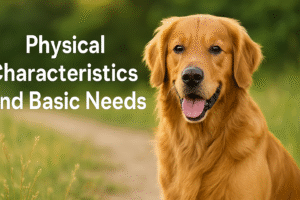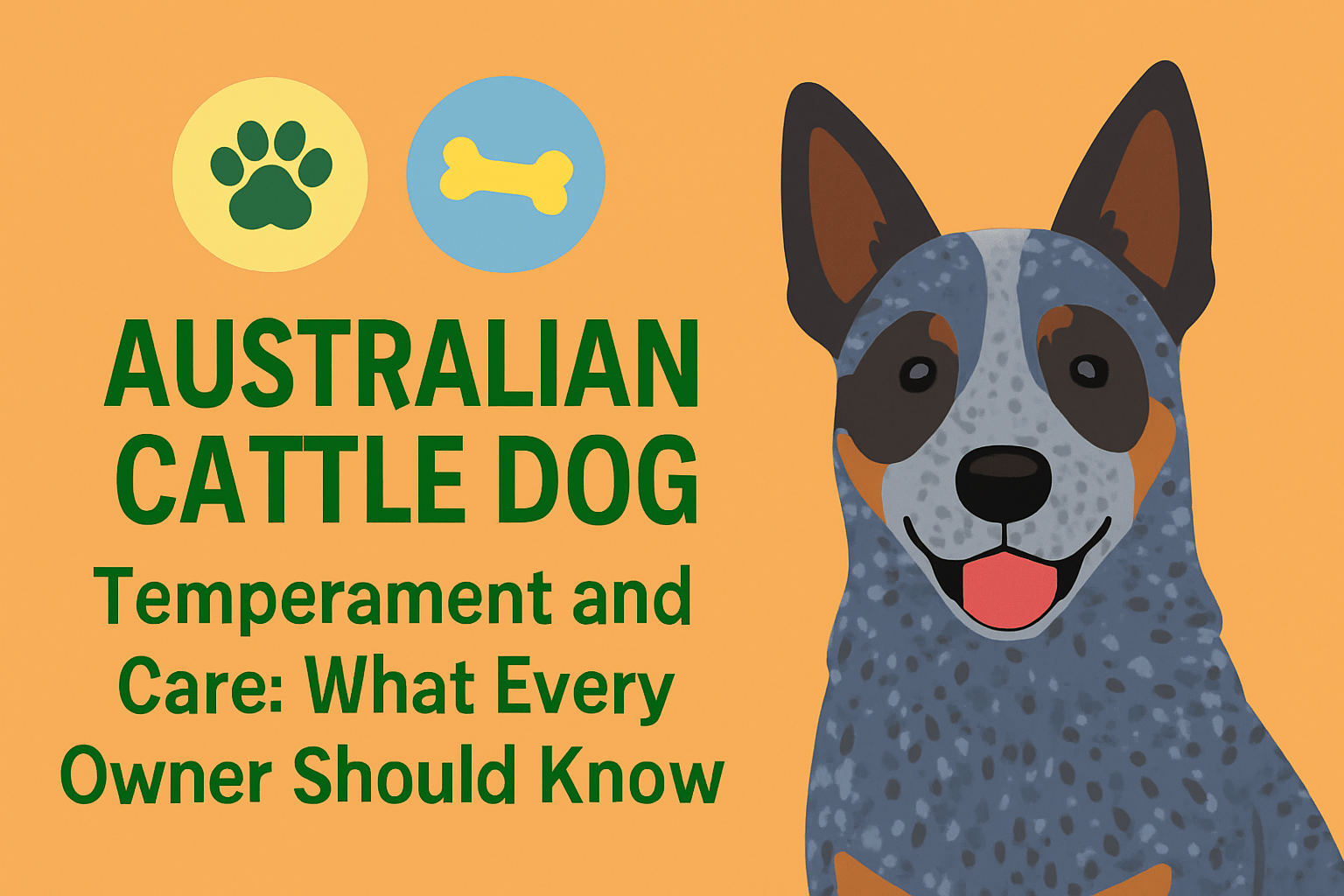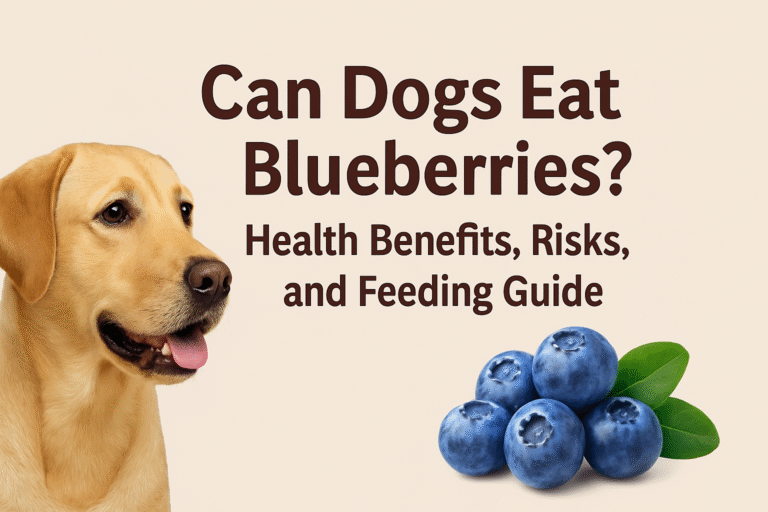Australian Cattle Dog Temperament and Care: What Every Owner Should Know
The Blue Heeler or Red Heeler is also known as the Australian Cattle Dog. This robust, agile, and highly intelligent working dog is bred to move the vast cattle over distances in the Australian outback. These dogs are admired for their energy, loyalty, and strong work ethic. But they are not suitable for everyone-they require daily physical and mental exercise.
If you’re considering bringing a Cattle Dog into your life, here’s the lowdown on their temperament and care.
1. Temperament and Personality
Active and Smart
Australian Cattle Dogs are always one of the smartest dog breeds. They were originally bred to think their way out of trouble and solve things for themselves, and that independence has stayed with them to this day. Their intelligence makes them great students—but also mischief-makers if bored.
Committed and Guarding
These dogs become closely attached to one or two family members, preferential selection of a “favorite” within the family. They are suspicious of strangers and are superb alert watchdogs but not typically unjustifiably aggressive.
Hardworking and Tenacious
Originally bred to spend their days working all day in rough conditions, they haven’t lost the drive. They love to work be it herding, obedience trials, agility or ordinary play and training structured.
Playful but Firm
At home, the dogs are friendly and playful, particularly with their familiar people. Their herding nature, however, can manifest in heel-nipping, particularly towards small children or other household pets. Early training can be effective in redirecting this tendency.
2. Physical Characteristics and Basic Needs

Small and Muscular Build
Australian Cattle Dogs are medium-sized with a lean, muscular build.They need to be around 35–50 pounds in weight and 17–20 inches at the shoulder. They can handle their longevity and agility based on their athletic build.
Coat and Coloring
They sport a dense double coat that is short in length and two colors: red (more freckled in appearance) and blue (speckled or mottled). Their weather-resistant coat allows them to work under any conditions.
Low Grooming Needs
Although they shed, their coats are comparatively low maintenance. Brushing once per week, with an occasional bath, will typically suffice to keep them clean and healthy.
3. Health and Lifespan
Life Expectancy
Australian Cattle Dogs can live 12 to 16 years with good care, longer than most breeds of similar size. One of their postives is how hardy they are.
Preventive Care
Breeders screen for these hereditary conditions. These conditions can be prevented or controlled through regular veterinary visits, a balanced diet, and regular exercise.
4. Training and Mental Stimulation
Start Early, Be Consistent
Training needs to start in puppyhood and go on throughout the life of the dog. This breed functions well with order and clear rules. They’re intelligent but sly learners, and if they’re not consistently trained, they’ll try to take over.
Positive Reinforcement Works Best
Reward with praise, play, and treats. Reserve the harsh corrections; these dogs learn fast as lightning to firm but ethical training. They relish a challenge and are quick to respond to the discipline of a well-structured world.
Early Socialization is Important
Due to their inherent wariness of strangers, exposure to a range of people, places, sounds, and other animals at an early age will serve them in good stead as they mature into well-adjusted adults.
Challenge Their Minds
Mental stimulation is required. If they do not receive mental stimulation, they will be neurotic or destructive. Puzzle toys, scent work, obedience practice, or learning new tricks are all excellent means of keeping them mentally stimulated.
5. Exercise Needs on a Daily Basis

High Maintenance, High Energy
This breed is not content with a quick around-the-block walk. They require at least 60 to 90 minutes of vigorous exercise each day. That may involve running, hiking, fetch, or training exercises.
Ideal for Active Lifestyles
If you’re someone who enjoys outdoor adventures or needs a partner for long runs, the Cattle Dog is a perfect fit. They also excel at dog sports like agility, flyball, and herding trials.
Apartment Living? Only Cautionary
Although technically they can live in apartments, it is only if you are able to provide their exercise and mental stimulation requirements. Without sufficient activity, they can become bored, loud, or destructive.
6. Grooming and Overall Care
Easy Grooming Routine
Brush your Cattle Dog weekly to manage shedding and keep their coat clean. Brushing twice a week for seasonal changes will minimize dog hair in your house.
Bathing and Skin Care
These should only be bathed occasionally unless they manage to get themselves dirty. Use a mild dog shampoo to prevent skin irritation. Regular flea, tick, and skin condition checks are also prudent.
Nail and Ear Care
Clip nails every few weeks and check ears every week to prevent buildup or infection. Brush teeth a few times a week to prevent dental build-up.
7. Living With a Cattle Dog
Best With Experienced Owners
This is not a first owner breed. Their intensity, drive, and independent nature require an owner who is familiar with dogs and can provide them with firm and consistent instruction.
Great With Older Children
They get along great with older children who respect boundaries. Their natural herding instincts may lead them to nip at young children while playing. Therefore, they should not be left alone with small children without close attention.
Be Cautious Around Other Pets
Though they will be nice to other dogs or cats if socialized from an early age, they still require supervision and socialization. They will have a tendency to herd other small animals.







